Don't Believe the Fear: A Fascinating (and Safe) Tour Through Mexico City
Anyone who reads the headlines would think travel to Mexico unsafe and unwise. A recent trip to Mexico City proves otherwise.
Though there are crime scares in Mexico that frighten tourists, it seemed very tame on our recent visit. This made me think that it is more for pansies than those that have excessive courage. We had nothing but good weather, excellent food, and great sightseeing.
And, the prices, ah madra mía.
What follows is the rundown on some of what we did in Mexico City, plus a review of our hotel, called The Gran.
Attractions
The museums are numerous. The source I consulted easily listed 50-75 of them. But, anyone can look at a recognized authority. Why not try the unrecognized non-authority (me) and address what isn’t in a guidebook—the unusual and even bizarre.
The Hall of Mexican Dentistry in the Museo de la Autonomía Universitaria
(University Autonomy Museum)
Get ready for a jaw-breaking exhibit. A group of dentists gathered enough momentum to renovate the 19th century Palacio de la Autonomía (Autonomy Palace) around and about the turn of the millennium. A Hall of Mexican Dentistry was the result of their efforts. The exhibits have examples of dentistry from the time of the Aztecs up to the 20th century.
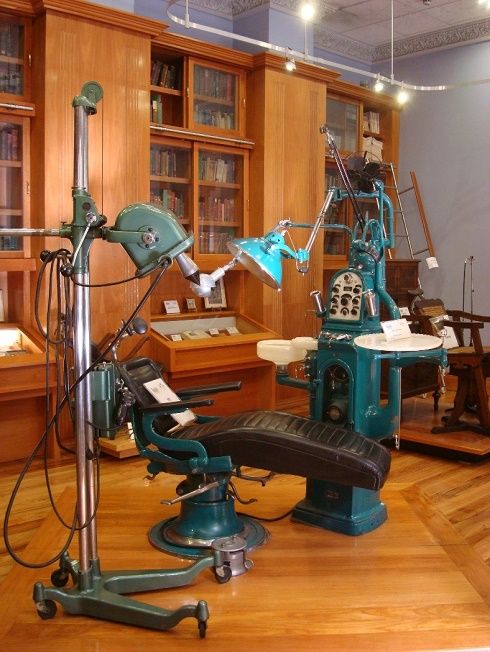
An early dental chair and its equipment in the Mexico City’s Hall of Mexican Dentistry.
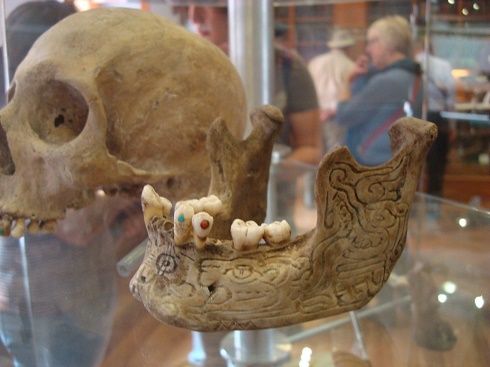
Prehistoric Mayan and Aztec fillings were precious jewels. After death, the jaw bones were incised as shown here. The Hall of Mexican Dentistry, Mexico City.
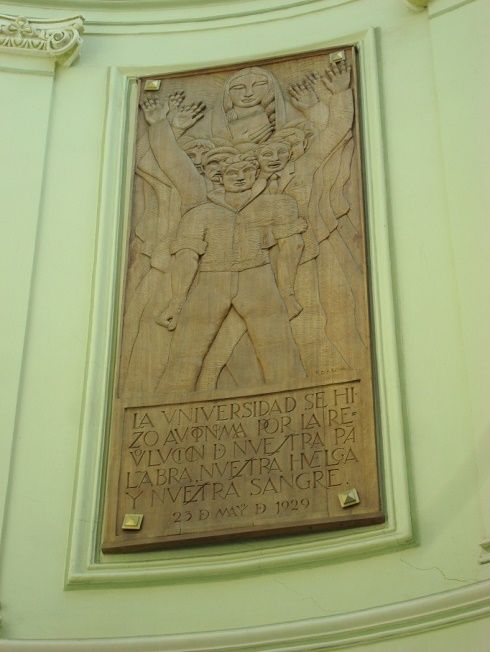
The university gained freedom from complete government control in 1929. The commemoration of that event is celebrated in a stairwell just off the dental museum. When you see it, you will know you are near your target, the Hall of Mexican Dentistry.
The Metropolitan Cathedral or Catedral Metropolitana de la Asunción de María
(Cathedral of the Assumption of Mary of Mexico City)
Churches are neither unnatural nor bizarre. It is what lies underneath this cathedral that makes it so. This holy church was built on an Aztec place of worship. Thereby, look down. Periodically, in the front of the Cathedral edifice, there will be glass areas through which to peer. The idea is to view some of the original Aztec ruins of which the church is now atop.
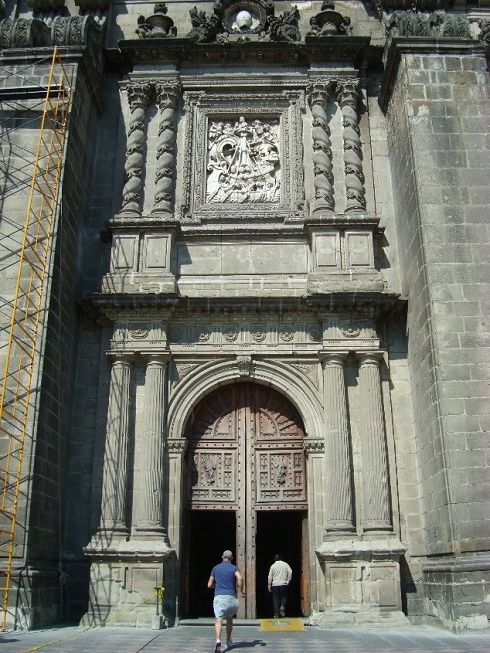
One of the entrances to the church.
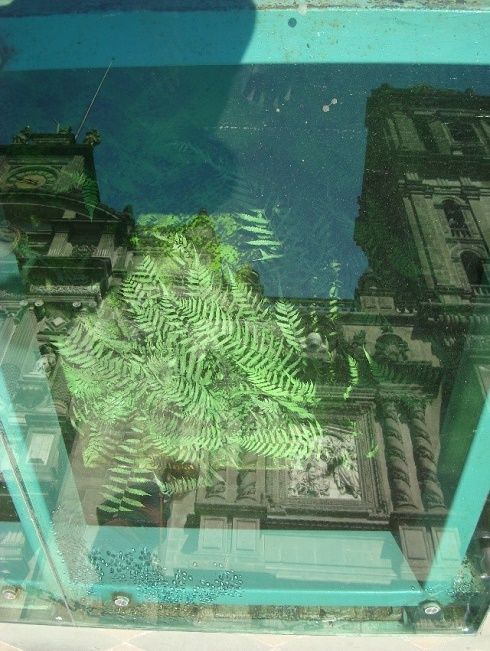
The glass in front of the entrance reflects the doors of the cathedral. Below is the earlier construction upon which the church was built. Tiles that were made in Mexico City from the 17th century are among the artifacts that can be seen.
There is more of the unfamiliar inside the church. Due to earthquakes and fires, parts of it were damaged over time. Therefore, what was a stairway to a pulpit made of precious stone had to be reconstructed after one such event. It ended up with the lower supporting structure made of a material much more modest than the more elegant original marble.

The stairway to the pulpit in the Cathedral of the Assumption of Mary of Mexico City. The upper precious marble is supported by the later modest replacement below due to an earthquake.
Museo Franz Mayer
The Franz Mayer Museum
Art of colonial Mexico is its focus. But, the real clincher was the unexpected. For example, early screens made in Mexico showing its conquest by Spaniards were made in exquisite detail. There was even an index for the scenes.
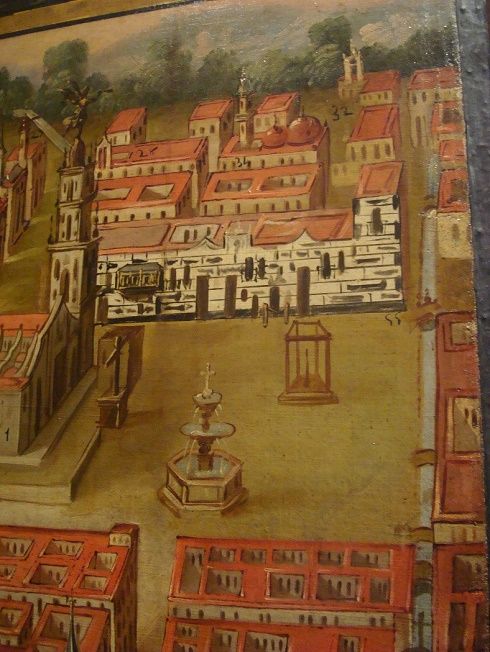
The Zócalo (central plaza) painted on an early screen. The Cathedral is on the left.
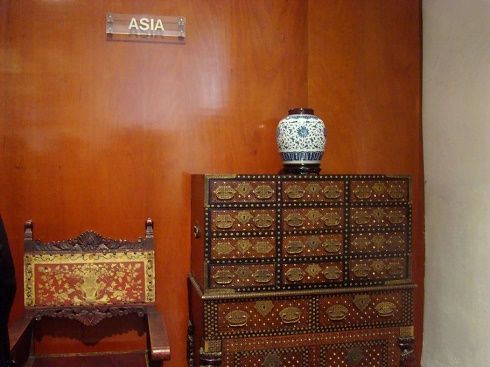
A display showing the products of Asia that were exported to Mexico. They inspired the creation of similar pieces in Mexico.
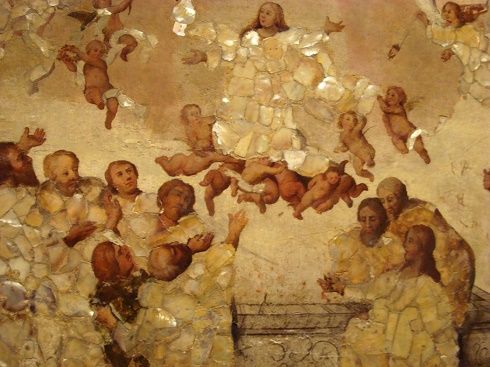
An unusual art form consisting of painting and shell overlay evidently inspired by the early import of Japanese screens to Mexico, also with shell adornment.
Seen on the Street
In Mexico, a lot happens on the street. First, there are masses of people. The city is 25 million large, so at any one time the chance that you will be accompanied by hundreds of others when walking is great. Most were Mexicans, even in city center where the tourist sites are located.
Within the close quarters with multiple other humans around, we were not pick-pocketed nor did we feel threatened in any way. In fact, walking on the street was interesting and even exciting. There were so many things to see that were out of the ordinary.
However, there are reports of pickpockets and other petty crime in Mexico City. It’s best to be careful as you would in any large foreign metropolis.
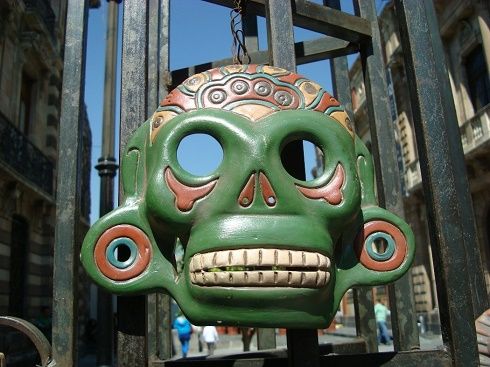
A mask for sale near the Zócalo, the main square.
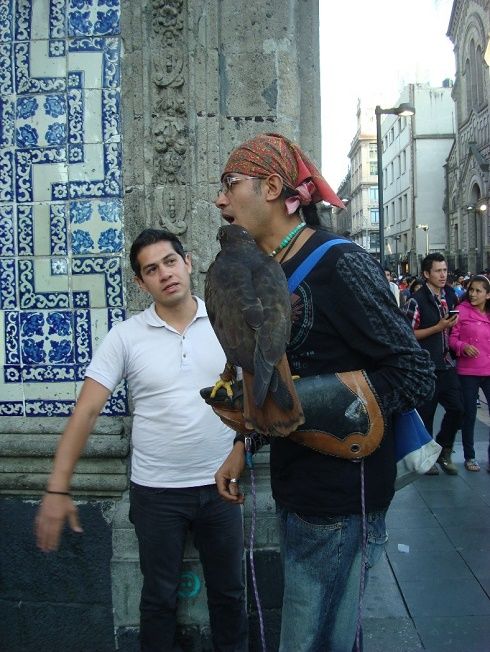
A man in a bandana carries a hawk. Notice the blue and white tiles on the building in the background on the left of old Mexican origin.
Our Hotel
The Gran Hotel
The advantage of this hotel is that it is historic and elegant. Also, it is centrally located on the Zócalo with large rooms and it is well priced. The down side, from my point of view, is that there was a slightly chronic distasteful smell in the bathroom. Another is the organ grinder who toils from eight in the morning until evening without fail day to day; it is noisy and repetitious. The third is that I suspect the vegetables for the morning slushes were not cleaned according to American standards. Montezuma’s revenge followed their consumption. But, overall, for the money, it is a good bargain. For those, willing to spend more, there is the luxurious Four Seasons nearby.
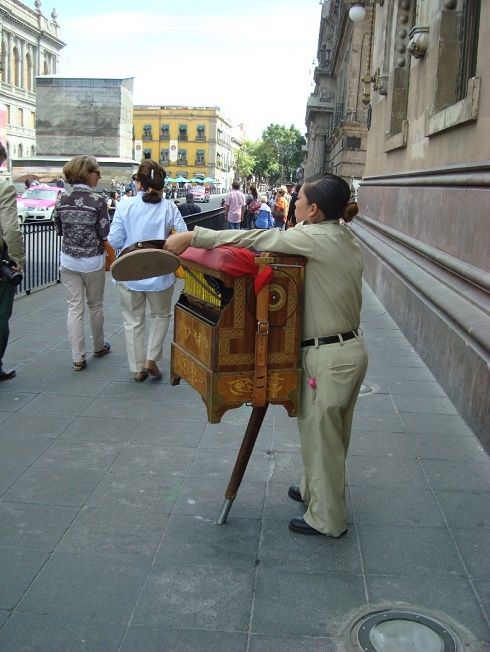
An organ grinder such as the one on the Zócalo that began playing at eight in the morning without fail.
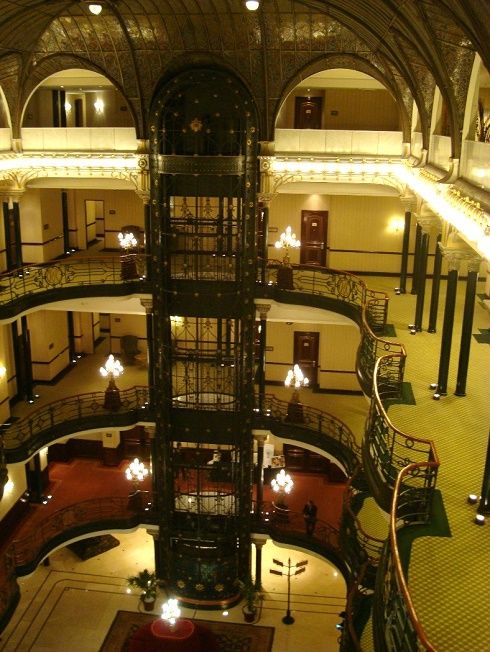
The elegant interior of the Gran Hotel, Mexico City. It was once a department store.
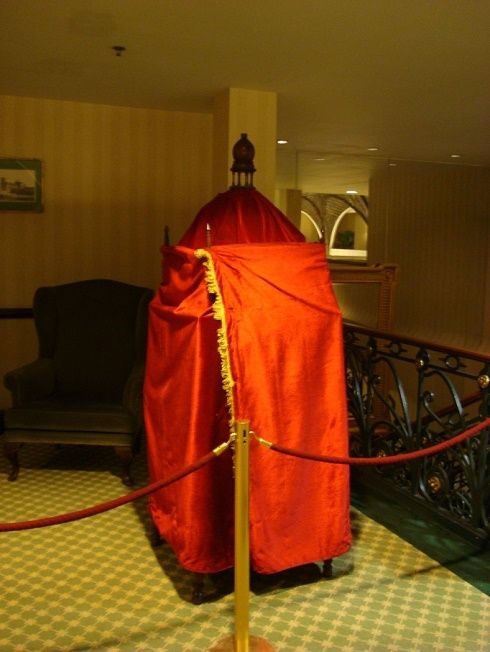
The bird cage in the lobby of the Gran Hotel was covered at night so that the exotic beast could get some rest.
All photographs by the author
For More:
ACTIVA BioACTIVE Bulk Flow Marks Pulpdent’s First Major Product Release in 4 Years
December 12th 2024Next-generation bulk-fill dental restorative raises the standard of care for bulk-fill procedures by providing natural remineralization support, while also overcoming current bulk-fill limitations.